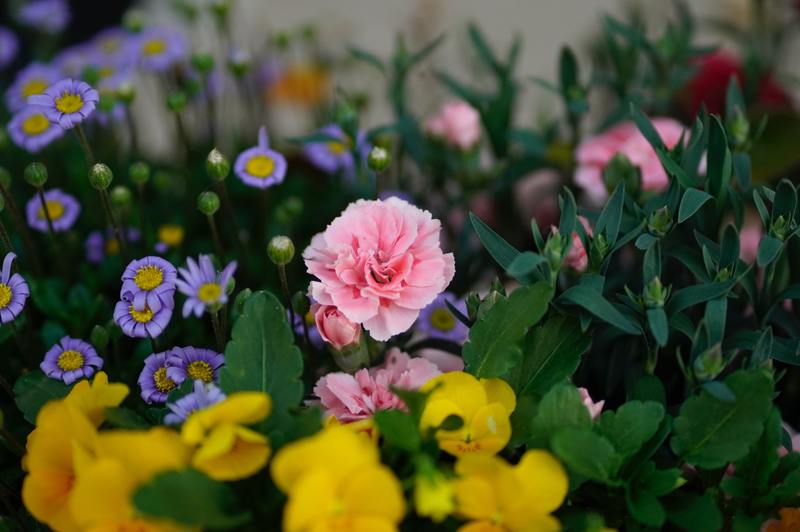To keep your white blooms at their best condition, you must know how to treat powdery mildew on gardenia. Their finest characteristic is their wonderful aroma which infuses the air with a fragrance like no other.
As such, it’s no surprise that gardeners guard their gardenias with their lives! Even the most cherished gardenia can succumb to one of the frequent gardenia illnesses.

This easy-to-follow tutorial will teach you how to appropriately maintain your favorite plant. Along with this are the other pertinent information you need to know.
Treating Powdery Mildew On Gardenia
Fungus causes the majority of problems in gardenia plants, which can be readily avoided by maintaining a well-draining setting with excellent air flow. Gardenia plant diseases can also be controlled with proper watering and pruning.
Powdery mildew is one of the most prevalent gardenia illnesses. When air circulation is weak, humidity builds up around dense bushes or tree canopies, resulting in powdery mildew.
Powdery mildew spores do not require standing water to develop, unlike other fungal illnesses, yet they cannot thrive without continual humidity.
Powdery mildew produces a white, fuzzy, or powdery coating on leaves, as well as new growth distortion. To be more familiar with it, check out this article on how to identify powdery mildew.
The following are the popular treatments in getting rid of powdery mildew on gardenia.
1. Milk
Although not all of the science is in, several studies suggest that milk is a widely used treatment due to its components. Although milk is not an authorized fungicide, you might want to give it a go because it’s neutral and doesn’t hurt plants.
Milk seems to operate by supplying nutrition to benign bacteria on leaf surfaces, reducing the surface area on leaves where powdery mildew can grow. Start by mixing 1 part milk to 2 to 3 parts of water.
Sprinkle the milk mixture on the powdery mildew as well as the surrounding area of the plant. To maintain your leaves free of fungus, do this once a week.
2. Horticultural Oil
Powdery mildew can be controlled by mixing 3 tablespoons of horticultural oil with 3 tablespoons of baking soda in a gallon of water. Horticultural oil is a pesticide active ingredient.
Never use a horticultural oil spray within two weeks of a sulfur spray and administer horticultural oils or sulfur to plants that are drought-stressed or when the temperature is above 90 °F. If rain is expected within the next 24 hours, don’t use a horticultural oil spray.
3. Baking soda
Combine 1 gallon of water, 1 tablespoon baking soda, and 12 teaspoon liquid soap, such as Castile soap (not detergent). Spray top and bottom leaf surfaces, as well as any afflicted regions, liberally.
Although it has some effect on current powdery mildew, this technique may be better as a preventative strategy.
4. Potassium Bicarbonate
Blend 1 gallon of water, 1 tablespoon potassium bicarbonate, and 12 teaspoon liquid soap (not detergent). Spritz all afflicted areas vigorously.
As a treatment for current conditions, this mixture may be more effective than baking soda. This is according to widely accepted formulas.
5. Trimming or pruning
Clean and throw the plant’s afflicted leaves, stems, buds, fruit, and vegetables. Some plants can be trimmed to the ground and fresh growth will spring up.
Broken or infected foliage should not be composted since the spores can proliferate and remain in the decomposed material. After using diseased plants, clean pruners and other instruments.
Preventing Powdery Mildew On Gardenia
Mildew spores are easily disseminated by the wind in warm, dry weather, but not so much in rainy, cool weather. Powdery mildew variants are specific to specific plant groups and do not transfer to other plant families.
Spores can spend the winter in leaf heaps and on plants. This is why any plant debris dropped by affected plants should be discarded rather than composted to avoid the disease from propagating or resurfacing the following spring.
The most cost-effective method of managing powdery mildew is to prevent its growth and/or severity. Temperatures of 50-65 degrees Fahrenheit, with humidity levels of 80-90 percent, are ideal for powdery mildew growth.
Avoid low-temperature, high-humidity conditions to avoid powdery mildew from growing in the first place. Low humidity rates are ensured through good air circulation, which inhibits the establishment of powdery mildew.
In terms of its spores, you might want to read this article on what temperature kills powdery mildew spores.
Plants that are too close together offer too much shadow for the bottom leaves, which stimulates the spread of fungi.
High temperatures are not a friend to powdery mildew. Because the sun’s intense beams destroy spores before they can proliferate, direct sunlight aids in the prevention of mildew formation.
Plants that are covered for a large portion of the day will remain colder. This allows the mildew to thrive.
Infectious plant leaves or fruit should never be used as mulch or compost. Trim sick leaves and stems and properly dispose of them.
Burn the material if your town permits backyard fires. If not, follow your local plant disposal requirements to dispose of the material.
Conclusion
Knowing how to treat powdery mildew on gardenia will keep your white blooms at its most magnificent condition. Go and save this article to achieve this!
